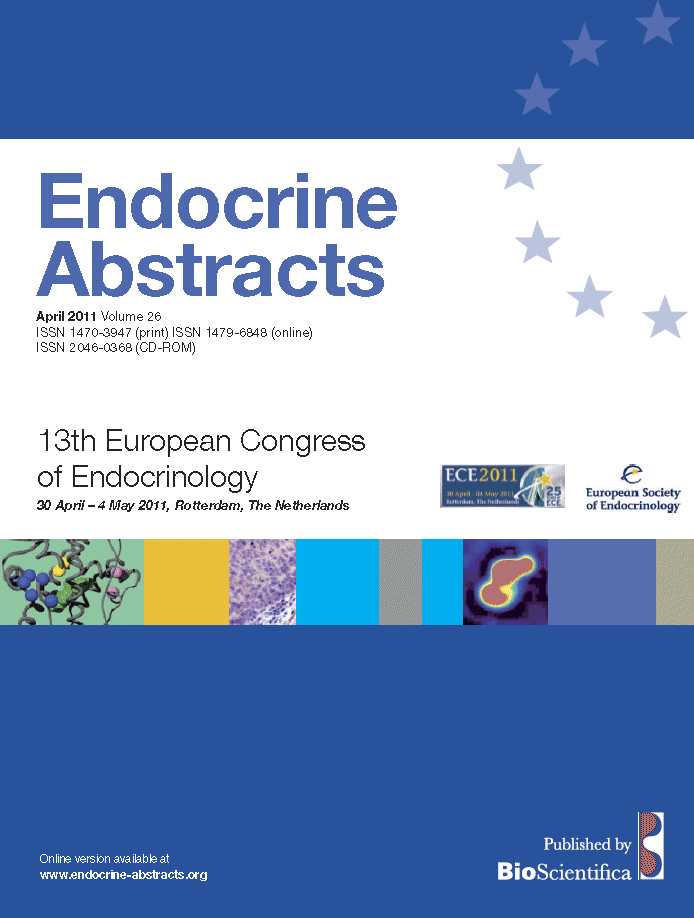Oral Communications
Neuroendocrinology
ea0026oc2.1 | Neuroendocrinology | ECE2011
Etoposide, doxorubicin, cisplatin, and mitotane versus streptozotocin and mitotane in adrenocortical carcinoma: preliminary results from the first international phase III trial: the FIRM-ACT study
Fassnacht Martin , Terzolo Massimo , Allolio Bruno , Baudin Eric , Haak Harm , Berruti Alfredo , Mueller Hans-Helge , Skogseid Britt
ea0026oc2.2 | Neuroendocrinology | ECE2011
Gonadotropin responses to kisspeptin are modulated by changes in aminoacidergic and neuropeptidergic neurotransmission: studies in peripubertal male rats
Pineda R , Ruiz-Pino F , Garcia-Galiano D , Sanchez-Garrido M A , Romero M , Castellano J M , Pinilla L , Tena-Sempere M
ea0026oc2.3 | Neuroendocrinology | ECE2011
Distribution of serotonin transporters in the human hypothalamus
Borgers A J , Bisschop P H , Fliers E , Alkemade A
ea0026oc2.4 | Neuroendocrinology | ECE2011
Genetic and molecular cytogenetic investigations in Turner syndrome patients with spontaneous pubertal development
Rossetti R , Castronovo C , Cacciatore C , Rusconi D , Calcaterra V , Finelli P , Larizza D , Persani L
ea0026oc2.5 | Neuroendocrinology | ECE2011
Risk of cardiac valve regurgitation with dopamine agonist use in Parkinson's disease and hyperprolactinemia
Trifiro G , Mokhles M , Dieleman J , van Soest E , Mazzaglia G , Herings R , de Luise C , Ross D , Brusselle G , Colao A , Haverkamp W , Schade R , van Camp G , Zanettini R , Sturkenboom M
ea0026oc2.6 | Neuroendocrinology | ECE2011
The spectrum and causes of gonadal dysfunction in adolescents and adults with Prader--Willi syndrome (PWS)
Eldar-Geva Talia , Hirsch Harry J , Benarroch Fortu , Gross-Tsur Varda




